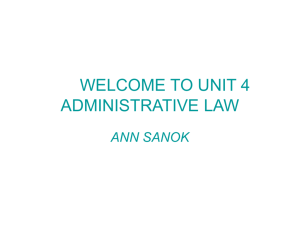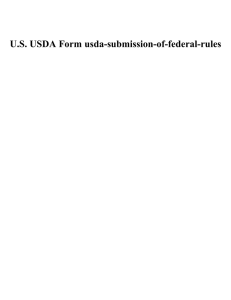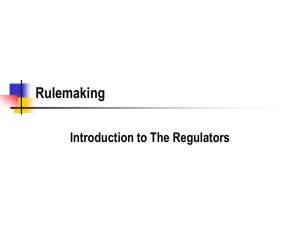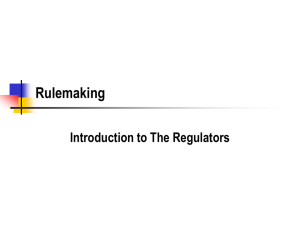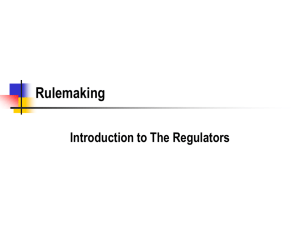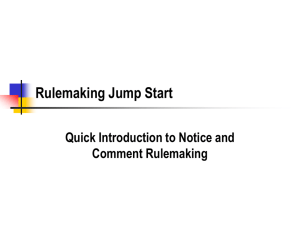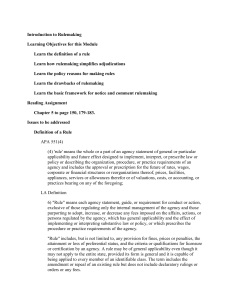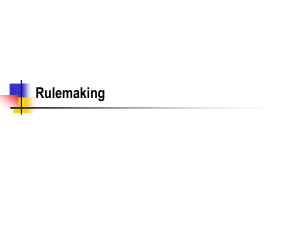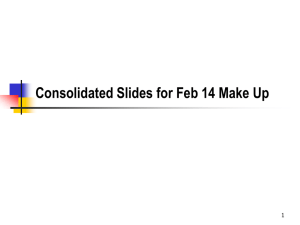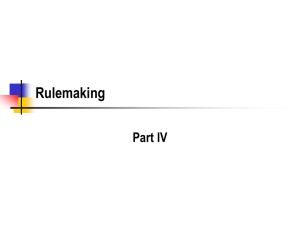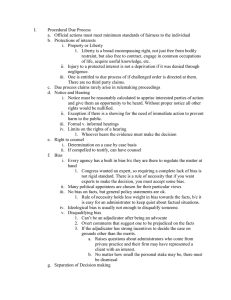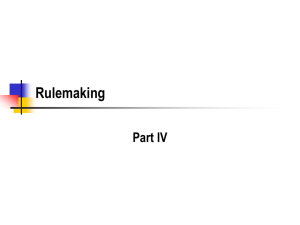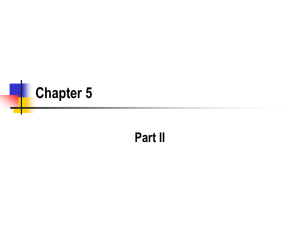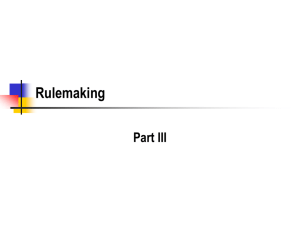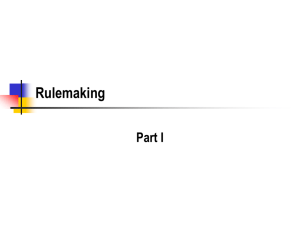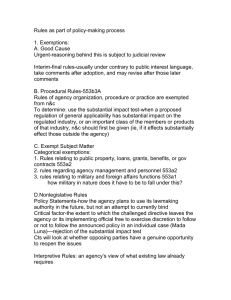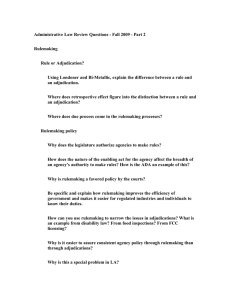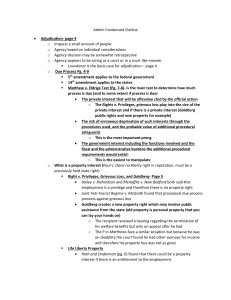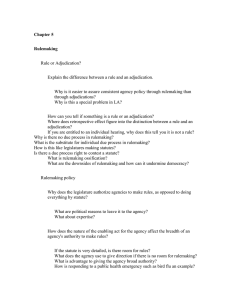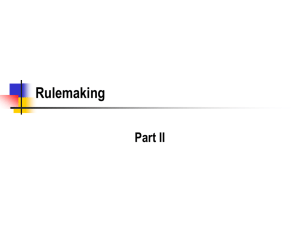Rulemaking Introduction to The Regulators
advertisement
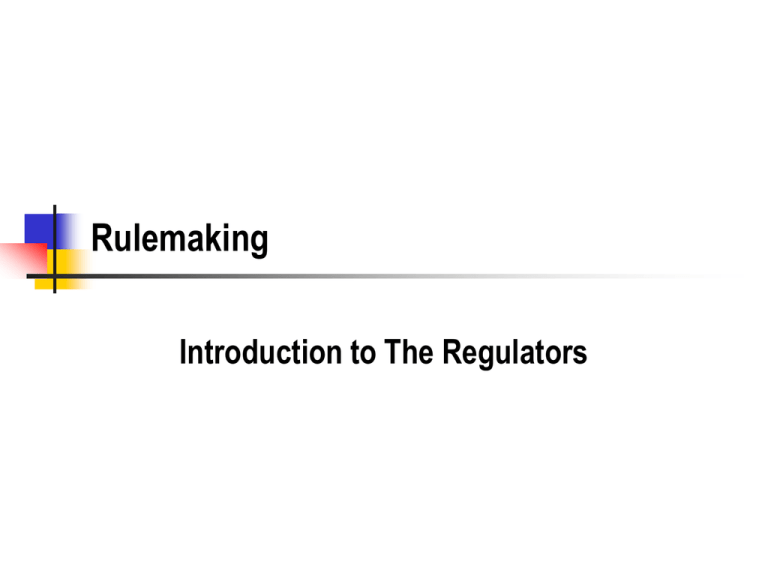
Rulemaking Introduction to The Regulators Jargon Alert Rule, legislative rule, or regulation They all mean the same thing Has the same effect as a statute passed by the legislature Non-Legislative rule Has no legal effect, but shows what the agency thinks the law is Many names - interpretive rule, guidelines, guidance document, anything but rule or regulation 2 The Power to Make Rules The power to make rules must be delegated by the legislature If the enable legislation (the legislation creating an agency) is silent, the agency cannot make rules The delegation may be broad, allowing the agency great discretion, or very narrow We will look at the standards for reviewing this delegation later in the course 3 Why Make Rules? Unless Congress directs the agency to make rules to provide standards for enforcing a law, the agency may enforce the law based on the statute, without promulgating rules The Clean Air Act required rulemaking to flesh out detailed technical standards Rules provide guidance for the public Rules limit what has to be proved in court 4 The Agency as Legislature The modern rulemaking process got started in the 1950s and really accelerated in the 1970s Parallels the growth of state and federal agencies The federal courts now encourage agency rulemaking It reduces litigation and simplifies the litigation that ensues 5 Must the Agency Make Rules? If the agency has the power to make rules, it still has the discretion on what rules to make and when to make them. The legislature can put provisions in the agency legislation requiring that certain rules be made, and the timeframe for making them. Unless there is a legislative directive, it is difficult to get the courts to force an agency to make rules Not impossible, as we will see latter. 6 How do you make a Rule? Publish the proposed rule and what it is based on for public comment The Federal Register and LA Register are where rules are published first Review and address public comments and publish these along with any modifications in the rule Codify the rule after it is effective Rules are Codified in Code of Federal Regulation and the LA Administrative Code 7 Why Have Public Participation? Public participation has great political benefit in broadening the acceptability of the rules. Public comments can identify technical and legal problems with the rules Publication of proposed rules allows politicians to become involved to protect the interests of their constituents Public participation limits executive power and makes it more palatable to the courts to have agencies making laws While the agency may take comments at hearings, it is usually done in writing. 8 Attacking Rulemaking Once a rule has been properly promulgated through notice and comment, it can only be attacked by attacking the published basis for the rule, and that must be done relatively soon after promulgation. We will see in the movie how the opponents of the rule work to get their changes made before the rule is finished. 9
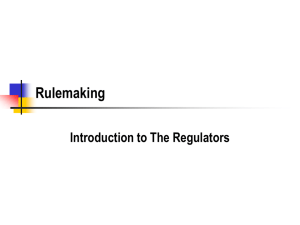
![Minnesota Department of [Name] MEMORANDUM](http://s2.studylib.net/store/data/015049440_1-475d22d0ab7bd661c71329dec0ae8429-300x300.png)
